Wetsuit Shampoo: Essential Care for Your Gear
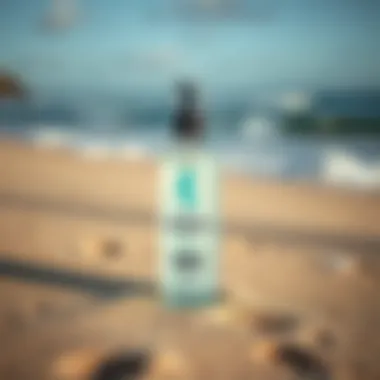
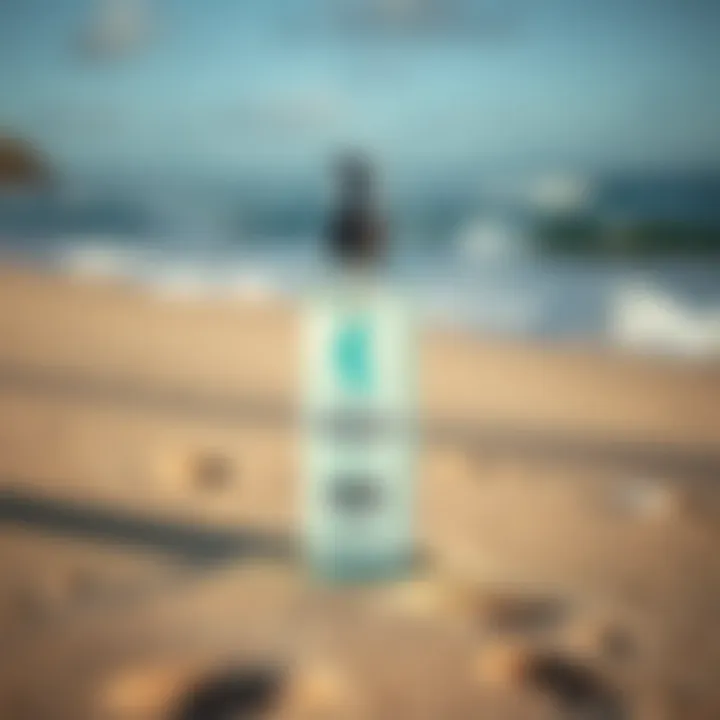
Intro
Water sports, especially kiteboarding, are exhilarating pursuits that connect adventurers with nature’s elements. However, a novice or seasoned kiteboarder can easily overlook the importance of proper gear maintenance. One crucial item often neglected is the wetsuit shampoo. While many might think a good rinse after a session in the ocean is enough, there’s more to keeping your suit in tip-top shape. Not only can a quality wetsuit shampoo extend the life of your gear, but it also helps maintain optimal performance and comfort.
This write-up dives into the nitty-gritty of wetsuit care, with a particular emphasis on the role of wetsuit shampoo. We'll discuss how these specialized shampoos are crafted, their perks, and how to use them effectively. Plus, we won't shy away from highlighting the potential consequences of neglect, which can be quite dire for your beloved wetsuit.
Remain with us as we unfold insights tailored for kiteboarding enthusiasts and newcomers alike, ensuring your gear remains as fresh as a daisy for every wave and gust.
--
Gear and Equipment
Essential Kiteboarding Gear for Beginners
When starting in kiteboarding, having the right gear is key. It’s not just about the kite; your wetsuit plays a significant role in your overall experience.
Here’s a rundown of essential gear:
- Wetsuit: A well-fitting wetsuit keeps you warm and protected against the elements. Remember, a good fit is paramount!
- Kite: Choose a kite that fits your skill level and wind conditions. Beginners often start with a stable, larger kite to learn the ropes.
- Board: A shorter board aids in maneuverability, while a longer one provides stability. There’s no one-size-fits-all here; personal preference matters.
- Safety Gear: Helmets and impact vests protect against the unexpected, which can be pretty common out on the water.
Navigating these waters as a novice can be daunting, but knowing the right equipment eases the journey.
Advanced Equipment for Experienced Riders
As one’s skills progress, so does the necessity for advanced equipment. Experienced kiteboarders often seek out specific traits in their gear:
- High-Performance Kites: Designed for speed and agility, these kites often feature advanced materials and construction, enabling tighter flying and better control.
- Custom Boards: Experienced riders frequently opt for boards tailored to their riding style, whether it’s freestyle or wave riding.
- Leashes and Fins: High-quality leashes help improve safety, while performance fins can enhance board handling.
Knowing when to upgrade equipment can elevate your kiteboarding experience and open doors to new maneuvers and tricks.
Common Challenges with Gear Maintenance
Maintaining your gear can sometimes feel like a chore. Nonetheless, neglect can lead to costly repairs or replacements, especially if you don't use wetsuit shampoos regularly. For instance, salt residue can degrade the neoprens. Keeping your gear clean boosts both performance and longevity.
"Ignoring the care for your wetsuit is like driving a Ferrari without ever changing the oil."
In the next sections, we will explore how wetsuit shampoo plays a pivotal role in resolving these gear maintenance challenges.
Understanding Wetsuits and Their Care
Wetsuits are fundamental in the realm of water sports, serving not just as a barrier to the cold, but also playing several pivotal roles in enhancing performance and safety on the water. This section aims to unwrap the essential aspects of wetsuit care, focusing on both maintenance and the materials involved in making these innovative garments. Emphasizing the importance of understanding how to care for a wetsuit, especially for enthusiasts who spend considerable time in the water, is crucial for longevity and functionality.
The Role of Wetsuits in Water Sports
Wetsuits act as a second skin, designed to provide thermal insulation while also protecting against the elements and potential abrasions from aquatic environments. For kiteboarders and surfers, a well-fitted wetsuit can mean the difference between an enjoyable experience and a miserable one when the temperature dips or as waves crash. More than just warmth, these suits promote buoyancy, allowing athletes to stay afloat with less effort.
In addition, they create a barrier against harmful UV rays, an often overlooked but important aspect of water sports, particularly during prolonged periods under the sun. A quality wetsuit supports an athlete's buoyancy and minimizes drag, enhancing overall performance. This protective yet performance-oriented nature is what makes their care vital; a damaged or neglected wetsuit can lead to reduced effectiveness, making it imperative to keep them in top-notch condition.
Material Composition of Wetsuits
Wetsuits are primarily made from neoprene, a synthetic rubber that provides thermal insulation by trapping a thin layer of water between the suit and the skin. This is crucial as the body heats up this water, helping to maintain warmth. Notably, the thickness of the neoprene can vary, allowing for options tailored to different water temperatures and conditions.
But neoprene isn’t the only material involved in wetsuit construction. Many suits incorporate additional features like reinforced seams, which are often sealed with tape or glue, enhancing durability and preventing leaks. Moreover, some manufacturers opt to combine neoprene with a layer of nylon for added stretch and flexibility.
The evolution in wetsuit technology now sees eco-friendlier alternatives appearing on the market. Companies are experimenting with materials derived from natural sources to reduce ecological footprints while still maintaining the required performance levels. Knowing the specifics of your wetsuit material can influence how you care for it, as different components may require unique handling.
What is Wetsuit Shampoo?


In the world of water sports, particularly for those who enjoy kiteboarding, the care of your gear is paramount. Enter wetsuit shampoo — a specialized cleaning product designed to maintain the integrity and longevity of wetsuits. Specifically formulated for this purpose, wetsuit shampoo is a crucial element in not just keeping your suit clean but also ensuring it performs optimally for each adventure on the water. Without proper maintenance, even the highest-quality wetsuits can succumb to wear and tear, making understanding wetsuit shampoo essential for enthusiasts.
Defined: Wetsuit Shampoo Explained
Wetsuit shampoo is more than just a soap. It’s a gentle cleanser tailored for the unique materials used in wetsuits, such as neoprene. Ordinary detergents or household soaps can be hostile to these materials, potentially leading to degradation over time. A quality wetsuit shampoo works by removing salt, sand, and chlorine residues accumulated from the water while being gentle enough not to strip away the natural oils that help maintain the suit's flexibility and insulation properties. This balance is what makes wetsuit shampoo indispensable for kiteboarders and other water sports lovers alike.
Key Ingredients in Wetsuit Shampoo
Understanding the components of wetsuit shampoo offers insight into why it's effective. Most formulations include:
- Surfactants: These agents break down dirt and grime, enabling easy rinsing without harsh scrubbing.
- Conditioning Agents: Designed to maintain the softness of neoprene, these help prevent the material from becoming brittle or stiff.
- Antibacterial Components: Essential for preventing odor and bacterial growth, which can occur if the wetsuit is not cleaned after each use.
- Eco-friendly Solvents: Many modern wetsuit shampoos also use plant-based ingredients, making them safer for aquatic environments.
Using a shampoo with these specific components ensures that you not only clean your wetsuit effectively but also extend its lifespan significantly. After all, nothing takes the wind out of your sails quite like a wetsuit that’s lost its form or developed a foul smell.
"Regular maintenance with the right products can save hundreds of dollars in replacement costs and ensure the best possible experience on the water."
Understanding what wetsuit shampoo is places kiteboarders at the forefront of proper gear maintenance and prepares them for the next thrilling ride on the waves.
Why Use Wetsuit Shampoo?
When it comes to the world of water sports, keeping one’s gear in top-notch condition is paramount. Among the essentials, wetsuit shampoo stands out. It’s more than just a cleaning product; it's a critical element in maintaining the quality and lifespan of your wetsuit. For kiteboarders and anyone spending significant time in water, understanding the importance of this specialized shampoo is crucial.
Benefits of Regular Wetsuit Cleaning
First off, let’s talk about the benefits stemming from regular cleaning using wetsuit shampoo. Just like you wouldn’t skip washing your favorite hoodie after a muddy adventure, your wetsuit begs for similar respect. Here’s why:
- Prolongs Life Cycle: Regular cleaning helps combat the wear and tear your wetsuit experiences during use. The ocean, lakes, or rivers are glorious but can be rough on materials.
- Enhances Performance: A clean wetsuit ensures that the neoprene retains its flexibility and buoyancy. This means you can glide through the water without the hindrance of grime or salt.
- Protects Against Material Breakdown: Saltwater and chlorine can degrade the suit’s fabric over time. Wetsuit shampoo neutralizes these harmful elements, keeping the material strong.
In fact, there are many who swear by a consistent cleaning regimen, arguing that it not only extends the life of the wetsuit but also enhances the overall surfing or kiteboarding experience.
Preventing Odor and Bacteria Growth
Another essential aspect to consider is how cleaning your wetsuit helps prevent odors and bacteria growth. Imagine pulling your wetsuit out of the bag and being greeted by a smell that could knock a seagull out of the sky. Nobody wants that!
Here are some key points:
- Eliminates Stubborn Odors: Over time, wetsuits can absorb smells from sweat, seawater, and even the food you eat during breaks. Regular shampooing dramatically reduces this stench, making your post-ride experience far more pleasant.
- Reduces the Risk of Infections: Bacteria thrive in damp environments. Using wetsuit shampoo helps eradicate the organisms that can cause skin irritations or infections. This is particularly vital for those who spend long hours in the water.
- Keeps It Fresh: No one wants a greasy wetsuit. A thorough clean with the right shampoo eliminates residues that accumulate, leaving your gear smelling fresh as a daisy.
"Regularly washing your wetsuit can save you from stink and skin problems; it’s like giving it a spa day!"
To sum it up, the importance of wetsuit shampoo cannot be overstated. It directly influences both the condition of your gear and, as a consequence, your overall performance and health while enjoying the thrills that come with water sports.
This dedication to care sets you up not only for a smoother ride but also shows respect for the equipment that aids in your adventures. So, let’s embrace this simple yet effective routine that can make all the difference in the water.
Proper Usage of Wetsuit Shampoo
Proper usage of wetsuit shampoo is the cornerstone of maintaining your water sports gear. For kiteboarders, the performance of a wetsuit is vital, so understanding how to care for it correctly can mean the difference between enjoying your time on the water and struggling with a damp, smelly suit.
Using the right shampoo affords several benefits that go far beyond mere cleanliness. Not only does it help rid your wetsuit of salt, sand, and those delightful smells of seaweed, but it also preserves the material itself. When you treat your suit well, it retains its flexibility and heat retention, keeping you at the top of your game.
Step-by-Step Cleaning Procedure
- Gather Your Supplies: Before diving into the process, collect your wetsuit shampoo, a sponge, a bucket, and clean water to make this as painless as possible. It’s best to avoid using regular laundry detergent, which can damage the neoprene.
- Fill the Bucket: Pour a small amount of wetsuit shampoo into the bucket and fill it with lukewarm water. Avoid hot water as it can damage the suit.
- Submerge the Wetsuit: Gently put your wetsuit in the bucket. Let it soak for around 10-15 minutes. This step allows the shampoo to penetrate the fabric.
- Scrub Lightly: Take your sponge and lightly scrub the wetsuit, particularly on the seams and areas of heavy use. Don’t scrub too hard; you want to treat it with care.
- Rinse Thoroughly: After scrubbing, it's crucial to rinse the wetsuit in cool, clean water. Any remaining shampoo can affect the neoprene if left in.
- Check for Any Stains: Inspect your suit for any residual stains that may need a bit more attention. If you find some, you can apply a bit more shampoo directly to those spots, scrub lightly, and rinse again.
Rinsing Techniques Post-Cleaning
After cleaning, how you rinse your wetsuit affects its longevity. Here’s how to do it right:
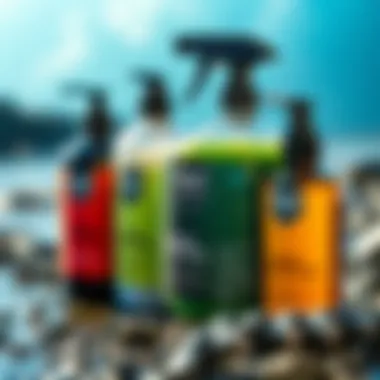

- Cool Water Rinse: Use cold or lukewarm water for rinsing. This helps to keep the neoprene intact without warping or damaging it.
- Gentle Flow: Avoid a harsh stream of water that can cause stress on the seams. Instead, let the water flow gently over your wetsuit.
- Inside-Out Rinse: Make it a habit to rinse your wetsuit inside and out. This ensures that all traces of shampoo or other residues, like sand, are washed away.
Drying Tips for Wetsuits
Drying your wetsuit correctly is equally crucial to its upkeep. Here are a few points to consider:
- Hang it Up: Use a wide hanger to allow air to circulate. Hanging it in a shaded area away from direct sunlight helps prevent fading and degradation.
- Turn it Inside Out Again: Start by hanging it inside out. This allows any remaining moisture near the seams to evaporate more effectively.
- Don’t Bunch it Up: Avoid folding or bunching the wetsuit when hanging. This can create creases and potentially cause damage.
- Avoid the Dryer: Never put your wetsuit in a dryer. The heat can ruin the materials and elastic properties.
Taking the proper steps in cleaning and maintaining your wetsuit can extend its life significantly. By following these best practices, you ensure that your gear stays in top condition, enabling you to focus on enjoying your kiteboarding adventures!
Common Mistakes in Wetsuit Care
Understanding common pitfalls in wetsuit care can be the difference between enjoying your time in the water and having to face unexpected damage or unpleasant odors. Many kiteboarders and water sports enthusiasts might feel that a quick rinse is enough after a day out, but neglecting proper maintenance can lead to a range of issues—from reduced performance to the early deterioration of your gear. Here, we’ll look at some frequent mistakes and provide guidance on how to avoid them for a longer-lasting wetsuit experience.
Neglecting Regular Cleaning
It’s easy to underestimate the need for regular cleaning, especially after a thrilling day spent riding the waves. You may think that the saltwater or fresh water will simply wash away any lingering debris. However, this assumption can be misleading. Salt, sand, and even remnants of sunscreen or other lotions can settle into the neoprene fabric, leading to degradation over time.
Regular cleaning is essential not only for hygiene but also for maintaining elasticity and overall performance. Lack of proper care can lead to a stiff wetsuit that doesn’t fit properly. Think of your wetsuit as an extension of yourself; if you don’t care for it, it won’t perform to its fullest potential.
Remember: A clean wetsuit is a happy wetsuit, which means you can focus more on riding the waves than worrying about your gear!
To avoid neglecting this step:
- Aim to rinse your wetsuit immediately after every session.
- Invest in wetsuit shampoo to ensure thorough cleaning. A simple solution of lukewarm water and a gentle detergent can also suffice – just be cautious!
- Set a cleaning schedule, perhaps at the end of each month or after a particularly heavy use, to ensure it stays in tip-top shape.
Using Harsh Chemicals or Detergents
Another significant misstep in wetsuit maintenance occurs with the use of harsh chemicals or standard laundry detergents. Although the idea of tossing your wetsuit in with your regular wash sounds practical, it can lead to disastrous consequences. Regular detergents contain enzymes and fragrances specifically formulated for other fabrics, which can degrade the neoprene material used in wetsuits.
Chemical residues can have long-lasting effects. They may lead to brake the natural oils of the material that keep it supple, resulting in cracks and a shortened lifespan. Similarly, some common household cleaners can contain bleach or other substances that should never come into contact with your wetsuit.
For effective cleaning without risking your wetsuit’s integrity:
- Always opt for wetsuit shampoo or gentle, eco-friendly alternatives that cater specifically to neoprene.
- If you’re looking for natural options, consider mild solutions like baby shampoo or castile soap. Both can do the job without compromising the material.
- Check labels carefully and avoid products with harsh chemicals.
In summary, ensuring the longevity and performance of your wetsuit doesn’t have to be an uphill battle. By steering clear of neglecting regular cleaning and the pitfalls associated with harsh cleaning agents, you can keep your wetsuit in peak condition and enhance your experience on the water. Making these small changes in your routine can yield substantial dividends, allowing you to focus on the thrill of kiteboarding, rather than dealing with equipment issues.
Environmental Considerations
As the popularity of water sports continues to rise, so does the necessity of being mindful about the environmental impact that our gear can have. When it comes to wetsuit care, the products and practices we choose can either contribute to environmental degradation or promote sustainability. Understanding the importance of relying on environmentally-friendly options not only benefits the planet but can also enhance the longevity of our cherished gear.
Eco-Friendly Wetsuit Shampoo Options
Eco-conscious kiteboarders and water sports enthusiasts have several options when it comes to selecting a wetsuit shampoo that aligns with sustainable practices. Here are a few notable alternatives:
- Plant-Based Formulations: Many brands are crafting shampoos derived from natural plant ingredients, eliminating harsh synthetic chemicals that can harm aquatic life.
- Biodegradable Products: Look for shampoos labeled as biodegradable. These products break down naturally, thus posing lesser risks to marine environments when washed away.
- Refillable Containers: Some companies offer the option of reusable containers, allowing users to buy shampoo refills and reduce plastic waste in landfills.
Using these eco-friendly alternatives not only helps preserve the ecosystem but also sends a message about the importance of sustainable practices within the water sports community.
Sustainability in Wetsuit Production
The wetsuit industry, like many others, is adapting to the increasing demand for sustainability. A shift in focus toward environmentally responsible manufacturing techniques is vital, as traditional methods can be energy-intensive and hazardous to marine ecosystems. Here are some practices contributing positively to sustainability:
- Recycled Materials: Brands are now producing wetsuits from recycled plastics and neoprene alternatives. This gives new life to materials that would otherwise contribute to landfills.
- Ethical Labor Practices: Sustainable production must also consider how workers are treated. Companies advocating for fair labor practices often earn loyalty from customers who value ethics as much as performance.
- Energy Efficiency: Innovative manufacturing processes that minimize energy consumption are vital for sustainability. Some brands are investing in renewable energy sources for their production plants.
"Our commitment to sustainability isn’t just about our products; it’s about inspiring every adventurer to make eco-friendly choices."
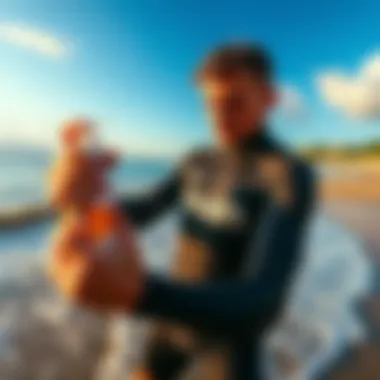
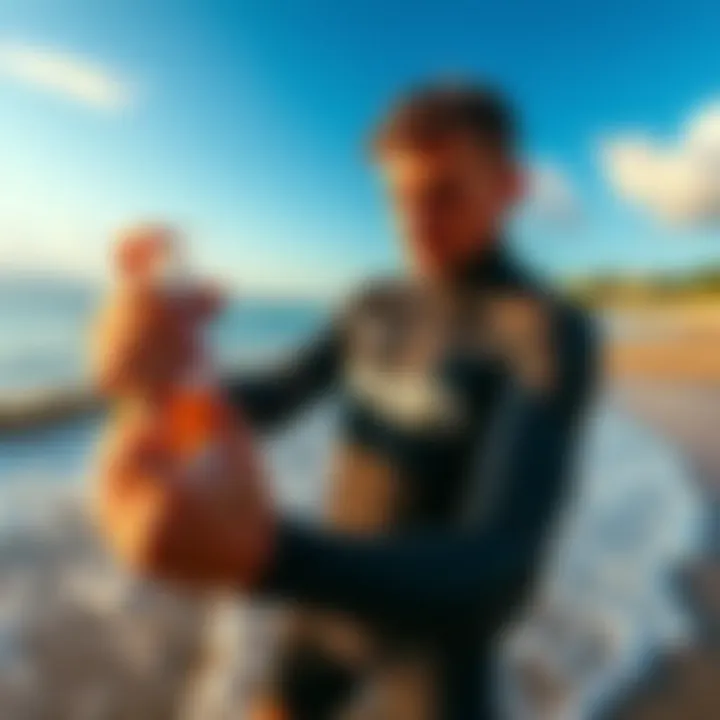
Innovative Alternatives to Traditional Wetsuit Shampoo
In the evolving realm of water sports equipment care, the search for effective cleaning solutions goes beyond conventional shampoo. It’s essential to delve into innovative alternatives that not only cater to your wetsuit's maintenance but also resonate with an environmentally conscious mindset. Using natural and homemade solutions offers various benefits, including reduced chemical exposure and often, cost savings. Moreover, embracing these alternatives can foster a deeper connection with the gear you rely on while enjoying your water adventures.
Homemade Cleaning Solutions
Creating your own homemade cleaning solutions can be a game-changer in maintaining your wetsuit. With just a few readily available household items, you can whip up effective cleaners without the harsh chemicals found in commercial products.
For instance, a mixture of mild dish soap and water can work wonders after a day spent in salty or chlorinated environments. Just combine two tablespoons of gentle dish soap with a gallon of lukewarm water and stir it well. Afterward, soak your wetsuit in the solution for about 10 to 15 minutes, then give it a gentle scrub with a soft brush. Rinse thoroughly with fresh water to ensure all soap residue is gone. This simple concoction minimizes the risk of damaging your wetsuit while keeping it fresh and clean.
Moreover, utilizing white vinegar is another effective method. It acts as a natural deodorizer and can help eliminate stubborn odors. Mix equal parts of water and vinegar in a spray bottle, and lightly mist the wetsuit after washing. Let it air out for a bit before rinsing it off. This can prolong the life of your suit without just covering up smells, a vital consideration for any serious kiteboarder.
Natural Ingredients for Wetsuit Care
When considering natural ingredients for wetsuit care, think about items like baking soda, essential oils, and even aloe vera. These ingredients not only cleanse but also enrich your wetsuit, lending it a fresher scent and better feel.
- Baking Soda: This household staple is renowned for its deodorizing properties. A solution of baking soda mixed with water can effectively neutralize odors. Just a quarter cup mixed with a gallon of water is sufficient for a cleaning soak.
- Essential Oils: Oils such as tea tree oil or lavender carry not just pleasant aromas but also boast natural antibacterial properties. A few drops in your cleaning solution can help combat bacteria that may cause unpleasant scents or mildew when wetsuits are stored after a long day of usage.
- Aloe Vera: Known primarily for its skin-soothing properties, it can serve to keep the internal lining of your wetsuit in check. A gentle wash that includes aloe can help prevent wear and tear, ensuring your suit maintains its flexibility and comfort.
By exploring these homemade cleaning options and natural ingredients, you can find solutions that work for you without resorting to store-bought shampoos. Living in harmony with your gear not only heightens your performance but can also reduce your environmental footprint—something every outdoor enthusiast should consider. With these methods at your disposal, maintaining the integrity of your wetsuit becomes not just a task but an experience that reflects your commitment to both your gear and the environment.
Summarizing Wetsuit Care Techniques
Caring for a wetsuit is not just about tossing it in the wash or hosing it down after a session. Understanding how to maintain this essential gear can significantly extend its life and enhance your experience in water sports. Summarizing wetsuit care techniques lays out the groundwork for kiteboarders and other water enthusiasts alike, emphasizing the importance of regular maintenance, proper cleaning products, and specific drying methods.
Why should one bother with all this? Well, it's simple: a well-cared-for wetsuit enhances comfort and performance, preventing complications that can arise from neglect. Whether it’s the stench that can build from bacteria or the wear and tear that can lead to leaks, addressing these issues before they start makes your time on the water a lot more enjoyable. Additionally, environments play a significant role; seawater, sun exposure, and even sand can wreak havoc on your gear. This summary will give you the key points necessary for effective upkeep of your wetsuit, ensuring that it remains your trusty companion in and out of the waves.
Key Takeaways for Wetsuit Maintenance
Here are some valuable tips to keep in mind for effective wetsuit care:
- Clean Regularly: Wetsuits should be rinsed immediately after each use. Saltwater, chlorine, and other contaminants can deteriorate the material over time. Use wetsuit shampoo to maintain flexibility and prevent odor.
- Avoid Harsh Chemicals: Common laundry detergents can degrade neoprene. Stick to wetsuit shampoos that are designed to be gentle on the fabric.
- Proper Drying: Always hang your wetsuit to dry in shade. Direct sunlight can break down the materials, leading to premature aging. Avoid folding or crumpling it to maintain its shape.
- Storage Matters: When not in use, store your wetsuit in a cool, dark place. Do not leave it crammed in a bag or behind the back seat of a car where it can be exposed to extreme temperatures.
- Inspect Frequently: Regularly check for any signs of wear or damage. Small cracks or holes can be fixed early on before they turn into bigger issues.
Remember: Just like any sporting equipment, a wetsuit is an investment. Proper care now means less hassle and more fun out on the water later.
By following these techniques, you'll not only ensure the longevity of your gear but also improve your experience every time you hit the waves.
For additional information regarding the materials and general care guidelines, resources such as Wikipedia or specialized forums on Reddit can provide comprehensive insights to further enhance your understanding.
Exploring the Future of Wetsuit Care
As the world of water sports continues to evolve, so too does the complexity and sophistication of the gear we use, particularly wetsuits. This section does not just scratch the surface of what's on the horizon; it digs deep into the future of wetsuit care, emphasizing how new technologies and innovations can bring substantial improvements not just in performance but also in sustainability and hygiene.
The importance of examining the future of wetsuit care can't be overstated. With increased participation in sports like kiteboarding, there’s a growing awareness about the need to maintain gear properly to enhance longevity and effectiveness. Applying foresight in this domain means we can preserve our equipment without compromising on environmental values.
Advancements in Wetsuit Materials
The materials used in making wetsuits are in a constant state of flux, with advancements sprouting from dedicated research and development efforts. Traditional neoprene, while effective, has its drawbacks—chiefly environmental concerns related to its production and disposal. The future lies in the progression towards more sustainable materials, such as limestone-based neoprene or even biodegradable options.
- Limestone Neoprene: This innovation, derived from natural limestone, reduces the carbon footprint associated with production compared to traditional petroleum-based neoprene. Manufacturers like Patagonia have already begun integrating this into their products, leading the charge toward eco-friendliness without sacrificing quality.
- Natural Rubber: Research into using natural rubber, which can be harvested without depleting the environment, presents a viable alternative. This method not only increases sustainability but can also enhance the wetsuit’s flexibility and comfort, attributes that all athletes desire.
- Recycled Materials: The integration of recycled materials into wetsuit production is another promising advancement. By utilizing waste products like plastic bottles or discarded fly fishing lines, companies are taking significant steps toward reducing the marine impact of their manufacturing processes.
By embracing these advancements, we can look forward to wetsuits that not only perform better but also reflect a commitment to environmental stewardship, thus appealing to a larger audience of eco-conscious water sports enthusiasts.
Technological Innovations in Cleaning Products
Just as the materials used to make wetsuits are evolving, so too are the products we use to keep them clean and fresh. Traditional soaps and conditioners often contain harsh chemicals that not only damage the suit but can also harm aquatic ecosystems when washed into the water. The future of wetsuit care is leaning towards innovative, eco-friendly cleaning solutions that provide effective cleanliness without the environmental backlash.
- Biodegradable Cleaners: These products are formulated with natural ingredients that break down quickly and safely, ensuring that no harmful chemicals linger in our oceans. Look for brands that advertise biogradable formulas, ensuring you’re gving back to the environemnt instead of taking away.
- Nanotechnology: This emerging field offers the potential to create cleaning solutions that operate at a molecular level, providing deeper clean and more effective protection against bacteria and odor buildup. Such advancements could minimize the need for frequent washing, dramatically extending the life of the wetsuit.
- Smart Solutions: Imagine a future where we can utilize sensors or QR codes on wetsuits, tracking wear and tear, and suggesting the best cleaning routines. This intersection of technology and care could ensure that wetsuit owners manage their gear with a level of precision never seen before.
As we pursue these innovations, all those who have the pleasure of gliding through water can breathe easier knowing that they’re doing their part in preserving the environment.
"The future of wetsuit care isn't just about keeping gear clean; it's about aligning our love for water sports with respect for the oceans that host them."
In summary, the future of wetsuit care is not merely a continuation of past practices but a transformative journey toward sustainability and efficiency. With new materials and technological advancements paving the way, we are not just preserving our equipment, but we're also safeguarding the environments we cherish. As these innovations become mainstream, the kiteboarding community can look forward to enhanced performance, cleaner oceans, and a robust sense of responsibility toward nature.



